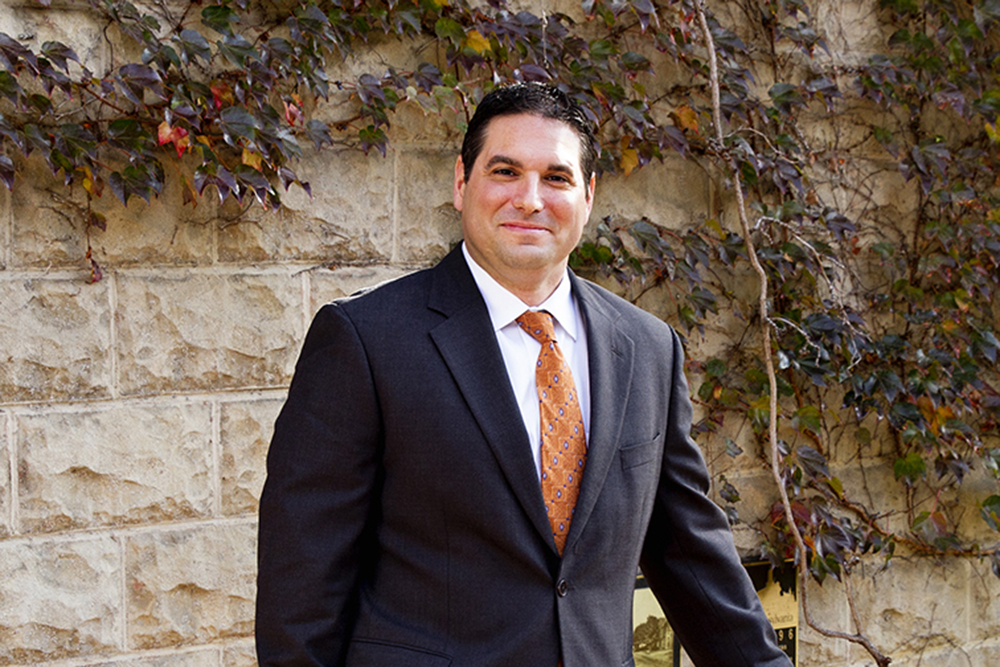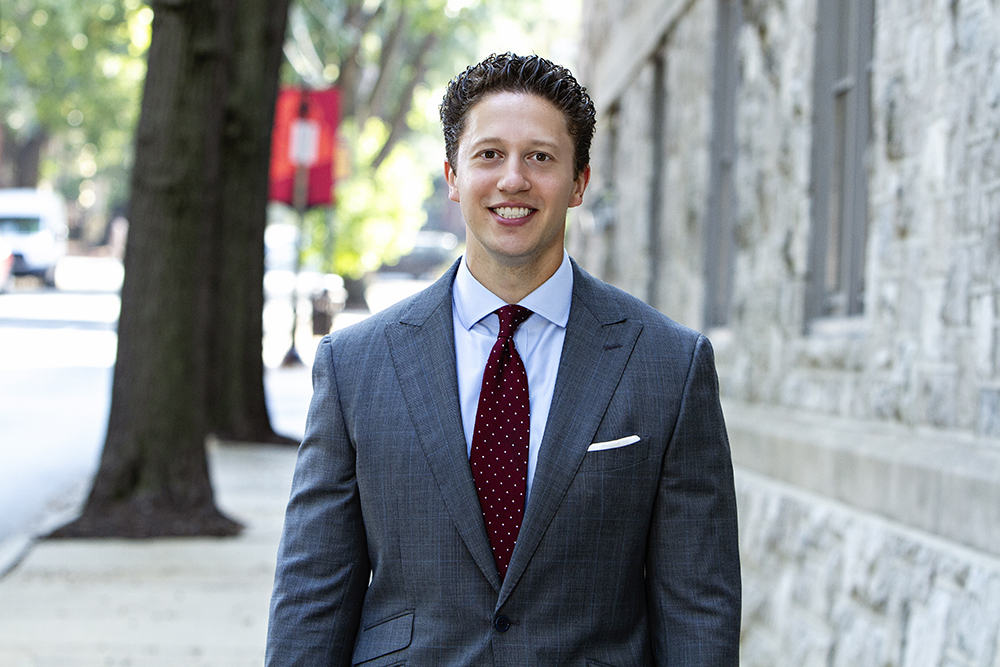McNees Insights – Estate Planning
March 27, 2016
Publications
In this issue: Estate Planning For Real Property l Spousal Lifetime Access Trusts l Spendthrift Trusts – How to (Properly) Protect A Beneficiary From Herself
Estate Planning For Real Property
Often the most difficult asset for which to plan in an estate plan is non-commercial real property such as a family farm, a hunting cabin or other recreational property. This is especially true when the property makes up a large portion of the estate. This article will briefly discuss five options a testator, i.e. a person making a Will, can consider for disposing of this type of property, each of which has advantages and disadvantages that can and should be discussed with an experienced estate planning attorney.
The first option is for the testator to provide in his/her Will that the property is to be sold at death and the proceeds are to be distributed to the beneficiaries. The advantage of this approach is that it is a simple, straightforward process. However, the obvious downside is that following the testator’s death, the property is no longer owned by the family. That said, under this approach, there is nothing that would prevent a beneficiary from purchasing the property so as to keep it in the family.
The second option is to leave the property to the beneficiaries as tenants-in-common. “Tenants-in-common” simply means that each beneficiary would have an equal, undivided interest in the property. One benefit of this approach is that the property will remain within the family for future use and enjoyment. The disadvantage is that, because each beneficiary has an undivided interest, they all share in the use of the property as a whole, which can be problematic if the interests of the beneficiaries differ or are in conflict. In addition, under this scenario, each beneficiary can sell, lease, mortgage, etc. his/her undivided interest in the property, which may or may not be consistent with the other beneficiary’s interests. In the event that there is a disagreement among the beneficiaries as how to manage the property which cannot be resolved by the beneficiaries themselves, one or more beneficiaries can petition the Court to have the property partitioned, i.e. divided in size in proportion to the number of beneficiaries or sold with the proceeds distributed to the beneficiaries in proportion to their interest. This process can be costly, however, so the testator may want to consider up front whether the interests of the beneficiaries are in line with each other prior to pursuing this option.
The third option is to subdivide the property and leave the subdivided parcels to the beneficiaries. A subdivision can be done during a testator’s life or at his/her death. Under this approach, each beneficiary would receive his/her own parcel or piece of the property, thus avoiding the potential conflict caused by the tenants in common approach described above. The advantage to creating a subdivision during the testator’s life is that the testator can ensure that the property is subdivided exactly as he/she desires and can address any issues that may arise during the subdivision process. If the subdivision is only to occur at the time of the testator’s death, it is recommended that the testator have a subdivision plan or survey attached to his/her Will to ensure the accuracy of the subdivided parcels. That said, because subdivision and land development ordinances do change over time, there may be unforeseen issues with a subdivision after death. Further, if a subdivision is to take place after death, the testator should provide in his/her Will how the costs of the subdivision and how any adverse tax consequence (e.g. rollback taxes) are to be paid.
The fourth option is to place the property in a Trust. A Trust can be funded with the property either during the testator’s life or at death. In addition, the testator can set forth in the Trust how the property is to be managed, including any rules, regulations or restrictions, which is advantageous to a testator seeking to control and maintain the property for the future. If a testator does decide to use this approach and place the property in a Trust, it is important also to provide sufficient funds in the Trust for the maintenance, taxes and governance of the property. If the property is placed in a Trust, the testator also needs to decide who is going to act as the trustee(s).
The fifth and final option is that a testator could form a Limited Liability Company or a Family Limited Partnership during his/her lifetime and place the property in that entity either before death or at death. In many ways, this option resembles the “Trust” option discussed above. However, under this approach, a testator should take some time up front to consider whether the entity will have the ability to transfer, sell, etc. the property as well as any tax consequences that may result from such a transfer.
With respect to any of the options outlined above, the key is for the testator to clearly and openly express his/her thoughts, concerns and goals related to the property with a qualified estate planning attorney so that the best option can be chosen for the particular situation.
Spousal Lifetime Access Trusts
In 2016, every U.S. citizen and non-citizen resident is able to shelter $5,450,000 from the federal estate tax. As a result, with minimal planning spouses can effectively shelter $10,900,000 from the federal estate tax. However, clients with current or potential exposure to the federal estate tax should take steps to avoid the estate tax and its top tax rate of 40%.
In general, there are three primary ways to address a client’s exposure to the federal estate tax: (1) begin to move property out of the client’s taxable estate, (2) incorporate charitable planning techniques into the client’s estate plan, or (3) purchase life insurance in a manner that will not cause the death benefit to be includable in the insured’s gross estate and use the death benefit to pay the death taxes. The vast majority of the techniques that are available to address a client’s exposure to the federal estate tax will fall into one of these three categories, and often times an estate plan will involve a combination of planning techniques from each category.
With respect to the first category, in order to effectively remove an asset from the reach of the federal estate tax, the clients must irrevocably transfer the asset and, following the transfer, may not retain any interest in, or derive any continuing benefit from, the transferred asset. However, many clients may not be comfortable with the idea of shedding a significant portion of their net worth.
A Spousal Lifetime Access Trust or “SLAT” is one planning technique that can provide a client who has exposure to the federal estate tax with the best of both worlds: the client will begin to move property out of the client’s taxable estate, yet the client will retain an indirect benefit in the transferred assets through the client’s spouse. On its face, the SLAT is a deceptively simple technique whereby one spouse (the “Grantor”) will make a transfer to an irrevocable trust that will benefit the Grantor’s spouse for the spouse’s lifetime. The Trustee of the SLAT, who may also be the Spouse-Beneficiary, is authorized to make distributions of income and principal to the Spouse-Beneficiary. If the Grantor’s spouse is the Trustee of the SLAT, distributions to the spouse must be limited to his or her health, education, maintenance or support in order to avoid inclusion of the assets of the trust in the estate of the spouse at his or her subsequent death. Often times, the Grantor’s children and descendants will also be named as beneficiaries who are eligible to receive distributions from the trust during the lifetime of the spouse. The value of the assets transferred to the trust, after taking into account any applicable valuation discounts, will utilize a portion of the Grantor’s $5,450,000 exemption from the federal estate tax. However, when structured correctly, the assets of the trust, and all appreciation in the value of the transferred assets that occurs between the time of the transfer and the death of the Grantor, will be excluded from the taxable gross estates of both the Grantor and the spouse. Moreover, if the SLAT is structured as a generation-skipping trust that will benefit the Grantor’s descendants for multiple generations, the assets of the trust will be forever sheltered from the federal estate tax so long as the assets remain in the trust.
By funding the SLAT for the benefit of the Grantor’s spouse, the Grantor will have created a separate fund for the benefit of his or her family while retaining an indirect benefit in the transferred assets by reason of the Grantor’s relationship with his spouse. What is good for one spouse is typically good for the other. Notwithstanding this benefit to the Grantor, the property in the SLAT will not be subject to estate tax when either the Grantor or the Grantor’s spouse dies.
Despite its appearance of simplicity, care must be taken to ensure that the SLAT is structured correctly. For example, if two spouses create SLATs for the benefit of each other, care must be taken to avoid the implication of the “reciprocal trust doctrine,” which is triggered when as a part of a coordinated arrangement two taxpayers create identical trusts for the benefit of each other. If the trusts are not sufficiently different, the respective SLATs would be includable in the taxable gross estates of the spouses. In addition, the potential for divorce between the Grantor and the Grantor’s spouse should be considered. If the Grantor were to establish a SLAT and then become divorced, it is likely that the Grantor would not want the divorced spouse to continue to enjoy the benefit of the trust. One solution to this problem is to clearly define the term “spouse” to mean the Grantor’s spouse at the time of a proposed distribution. This would prevent the Trustee from making distributions to an ex-spouse and would even permit distributions to a future spouse upon the Grantor’s remarriage.
Finally, the possibility that the Grantor’s spouse might predecease the Grantor should be considered. Typically, a SLAT will provide that upon the death of the spouse the trust will divide into separate generation-skipping trusts for the benefit of the Grantor’s descendants. Because the Grantor will lose his or her indirect access to the trust assets upon the death of the Grantor’s spouse, the Grantor may be hesitant to fund a SLAT if there is a question concerning the health of the spouse. One solution to this problem is to give the spouse a “limited power of appointment” to appoint the assets of the SLAT to a separate trust for the benefit of the Grantor upon the death of the spouse. Caution must be taken to ensure that the spouse’s exercise of the limited power of appointment does not cause inclusion of the trust assets in the taxable gross estate of either spouse and that the assets of the trust continue to be safe from creditors.
Under the right circumstances, a SLAT can provide a client who has exposure to the federal estate tax with the best of both worlds: the Grantor will begin to move equity out of the Grantor’s taxable gross estate, yet the Grantor will retain an indirect benefit in the transferred assets through the Grantor’s spouse. Nonetheless, significant care must be taken to ensure that the SLAT is drafted correctly in order to avoid a variety of common pitfalls and traps for the unwary.
Spendthrift Trusts – How to (Properly) Protect A Beneficiary From Herself
Much of the estate planning process is engaged with protecting vulnerable persons from negative outside influences. We name guardians to take care of minor children, utilize Powers of Attorney to facilitate substitute decision-making for the incapacitated, and tailor trusts to protect younger beneficiaries from bad marriages and financial predators. Occasionally, lifetime trusts are necessary to protect certain beneficiaries, often referred to as spendthrifts, from themselves.
Long sanctioned under Pennsylvania law, a so-called ‘spendthrift trust’ established by one person for the benefit of another offers protection against two threats: (i) the ability of the beneficiary’s creditor to reach the trust assets before actually distributed, and (ii) the ability of a beneficiary to assign or transfer an interest in the trust. While there are exceptions to the protection offered by spendthrift trusts (for example, claims for child support and by certain taxing authorities) a properly drafted instrument is effective against a broad range of creditors and ensures that a beneficiary cannot use his interest in the trust as collateral for loans or other security, particularly important in cases where the beneficiary engages in compulsive behaviors such as gambling.
To create a spendthrift trust, Pennsylvania requires only that the language of the trust expressly reference itself as a ‘spendthrift trust.’ In spite of that, one can still get it wrong.
A recent (and factually complex) Pennsylvania case involved trust language that did prohibit involuntary transfers to creditors of the beneficiary. Because it did not use the term ‘spendthrift trust,’ however, the Court held that it did not restrain voluntary transfers and, therefore, the beneficiary’s assignment of her interest in the trust was effective and the creditor was allowed to reach the trust assets. While the facts of this particular case were byzantine, the lesson is simple: if your estate plan requires protection of a spendthrift beneficiary, consult with counsel to ensure that the protection will be effective.
© 2016 McNees Wallace & Nurick LLC
McNees Insights is presented with the understanding that the publisher does not render specific legal, accounting or other professional service to the reader. Due to the rapidly changing nature of the law, information contained in this publication may become outdated. Anyone using this material must always research original sources of authority and update this information to ensure accuracy and applicability to specific legal matters. In no event will the authors, the reviewers or the publisher be liable for any damage, whether direct, indirect or consequential, claimed to result from the use of this material.




